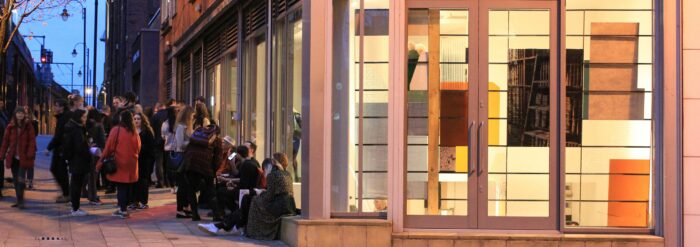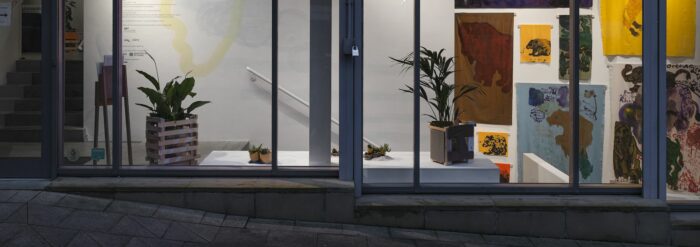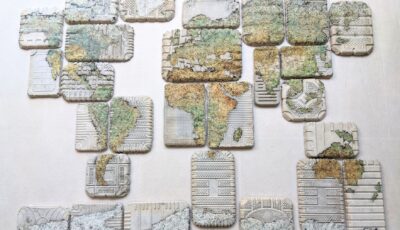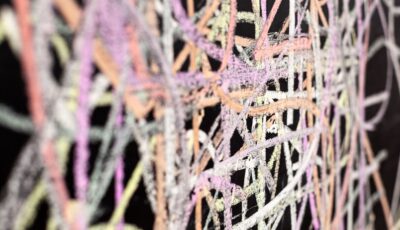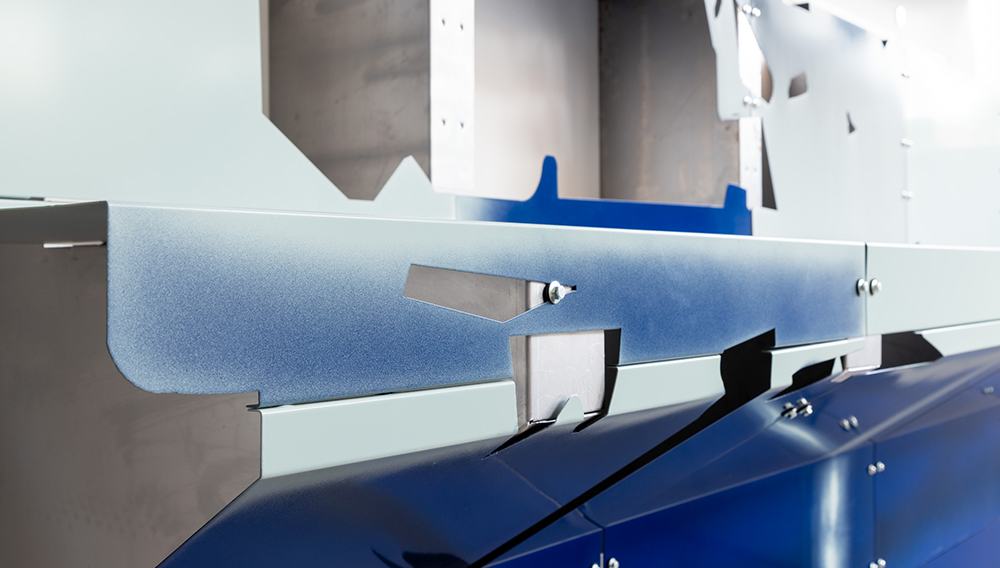
Spotlight: Artists and Sustainability – Nicola Ellis
Posted on 29 July 2021
Nicola Ellis is next artist in our Spotlight series who we have asked to give short responses about their work and how it might relate to climate change. Ellis’ exhibition Nicola Ellis and Ritherdon & Co Ltd: No gaps in the line was at Castlefield Gallery 13 June – 1 August 2021 and visitors can continue to explore the exhibition online here.
—
In what ways do you feel your work might relate to issues of climate change and sustainability, in the content of the work, its narrative, conceptually or theoretically. How might it speak to or challenge public discourse?
My work is a response to a specific context – Ritherdon & Co Ltd – which is a manufacturer of steel enclosures. Ritherdon uses Lean Manufacturing and S5 to structure their factory workplace. Therefore, there are layers of my current work that is rooted in systems that maximize the potential to produce objects while simultaneously minimizing waste in the form of energy, material, and human labour.
Layers of my work also investigate how individual people work within these systems, addressing the human element of workflow management directly in the work as opposed to discussing or illustrating a theory. The work gets into the points where the practice and the theory meet. I feel it is important for creative practice to begin occupying some space in positions outside of traditional art contexts. This will ultimately enable a wider audience to understand how sustainable practice occurs in the new context and in the creative practice.
With regards the materials, processes and techniques you use to produce your work, are there any practical decisions you make with regards climate change and sustainability?
I have spent three years developing ways to produce work within the small pockets of ‘down time’ that exist in a functioning manufacturer. I have been using the small amounts of waste produced by the manufacturing processes to make much of my recent work, rather than new materials. This means the work utilizes the already well-managed and reduced amount of waste within the factory environment, along with processes and facilities that are already hot/set up for use/ temporarily paused. This way of operating creates contextual parameters for the work and my practice in relation to ‘Lean’ but also means less energy is necessary to produce the work.
I think the word sustainability should also be considered in relation to how an artist makes a practice sustainable for themselves along with having as little impact on the environment as possible. Developing a relationship with the industry (or anywhere for that matter) who find the requests I make to be small in comparison to their everyday operations is a way I have made my practice sustainable for me. Most of the time I require a small amount of support to operate on-site so Ritherdon is happy for me to continue working there. Admittedly, the need for support and the amount of new material changes according to the type of work being produced on-site, but larger projects are made possible by investing my time in understanding how the factory environment functions, remaining flexible and working with the Ritherdon team to ensure even the largest work can travel through the factory floor as efficiently as possible.
In general, how do you feel galleries, art spaces, artworks and artists, might be able to contribute, what if any role do you feel they can play in a progressive conversation?
For artists, I think it depends on what the respective artists’ practices are. It is normal for other industries to invest time and resources in reflecting on their own practices, along with visiting other places/industries/businesses to see how they operate and innovate. The problem is, artists are often low on time and resources so it can be very difficult to designate time for this kind of activity.
If artists are able to afford the time for this kind of reflection about sustainability, then that’s a great thing. If infrastructure such as institutions, galleries, arts organizations, and spaces have sustainability on their agenda then I think they can help by securing resources to enable time for individual artists to reflect in this way. However, I think such support needs to be totally led by the individual artists’ requirements. The reflection process is not always – or maybe never – a neat and tidy straightforward process that happens overnight.
Are there any tips or advice, anything you have learnt you might want to share with other artists or our audiences?
I quote the late and great founder of Artist Placement Group, Barbara Steveni- ‘Go out and bang on some doors’. Don’t be satisfied with what opportunities and ways of practicing currently exist. We have to find a way to make the specific things we need to happen, happen for our individual practices by hook or by crook – be that about the sustainability of our practices in relation to the environment, ourselves as individual practitioners, or otherwise. I recommend speaking to people you know who might be outside of the art context to ask for advice. We don’t always have to spend time reinventing the wheel and people might be more interested and willing to help than you think.
July 2021: Nicola Ellis
Image: Nicola Ellis, S.A.M.S.P.S.E (Semi-automatic machine self-portrait: Sculpture edition), 2021 (detail). Photo courtesy: Jules Lister.
